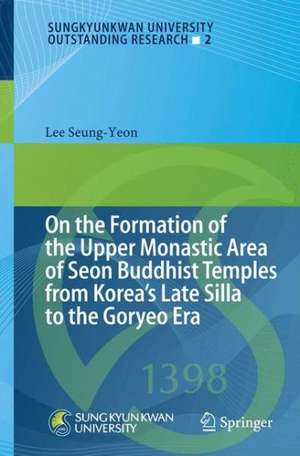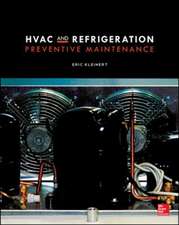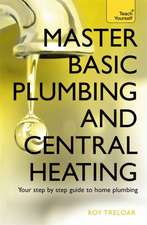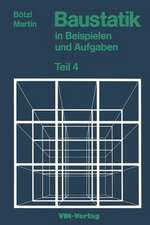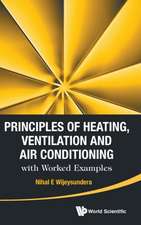On the Formation of the Upper Monastic Area of Seon Buddhist Temples from Korea´s Late Silla to the Goryeo Era: Sungkyunkwan University Outstanding Research, cartea 2
Autor Lee Seung-yeonen Limba Engleză Hardback – 30 iul 2013
To accomplish this, the author analyzed the inscriptions on stone monuments which recorded the lives of eminent monks and also numerous excavated temple ruins. These analyses give us a new perspective on the evolution of the upper monastic area, which had the beopdang as its center, at a time when early Seon temples were being established under very adverse and unstable circumstances. The exploration of the spatial organization and layout of Korean Seon temple architecture has illuminated the continuity between Korean Buddhist temples of both the ancient and medieval eras.
| Toate formatele și edițiile | Preț | Express |
|---|---|---|
| Paperback (1) | 632.22 lei 6-8 săpt. | |
| Springer International Publishing – 8 aug 2015 | 632.22 lei 6-8 săpt. | |
| Hardback (1) | 636.80 lei 6-8 săpt. | |
| Springer International Publishing – 30 iul 2013 | 636.80 lei 6-8 săpt. |
Preț: 636.80 lei
Preț vechi: 749.19 lei
-15% Nou
Puncte Express: 955
Preț estimativ în valută:
121.87€ • 132.33$ • 102.37£
121.87€ • 132.33$ • 102.37£
Carte tipărită la comandă
Livrare economică 22 aprilie-06 mai
Preluare comenzi: 021 569.72.76
Specificații
ISBN-13: 9783319000527
ISBN-10: 3319000527
Pagini: 128
Ilustrații: IX, 117 p.
Dimensiuni: 155 x 235 x 13 mm
Greutate: 0.32 kg
Ediția:2013
Editura: Springer International Publishing
Colecția Springer
Seria Sungkyunkwan University Outstanding Research
Locul publicării:Cham, Switzerland
ISBN-10: 3319000527
Pagini: 128
Ilustrații: IX, 117 p.
Dimensiuni: 155 x 235 x 13 mm
Greutate: 0.32 kg
Ediția:2013
Editura: Springer International Publishing
Colecția Springer
Seria Sungkyunkwan University Outstanding Research
Locul publicării:Cham, Switzerland
Public țintă
ResearchCuprins
Background of Seon Temple Establishment in Early Seon Buddhism.- Ancient Lecture Hall and the Spatial Organization of the Buildings on its Left and Right.- Establishment of the Upper Monastic Area with the Beopdang as its Center in Korean Seon Temples.- Formation of Multiple Areas within Seon Temples in the Aftermath of the Dissolution of the Upper Monastic Area.
Textul de pe ultima copertă
When Seon (Zen) Buddhism was first introduced to Korea around Korea’s late Silla and early Goryeo eras, the function of the “beopdang” (Dharma hall) was transfused to the lecture hall found in ancient Buddhist temples, establishing a pivotal area within the temple compound called the “upper monastic area.” By exploring the structural formation and dissolution of the upper monastic area, the author shows how Korea established its own distinctive Seon temples, unlike those of China and Japan, in the course of assimilating a newly-introduced foreign culture as its own.
To accomplish this, the author analyzed the inscriptions on stone monuments which recorded the lives of eminent monks and also numerous excavated temple ruins. These analyses give us a new perspective on the evolution of the upper monastic area, which had the beopdang as its center, at a time when early Seon temples were being established under very adverse and unstable circumstances. The exploration of the spatial organization and layout of Korean Seon temple architecture has illuminated the continuity between Korean Buddhist temples of both the ancient and medieval eras.
To accomplish this, the author analyzed the inscriptions on stone monuments which recorded the lives of eminent monks and also numerous excavated temple ruins. These analyses give us a new perspective on the evolution of the upper monastic area, which had the beopdang as its center, at a time when early Seon temples were being established under very adverse and unstable circumstances. The exploration of the spatial organization and layout of Korean Seon temple architecture has illuminated the continuity between Korean Buddhist temples of both the ancient and medieval eras.
Caracteristici
Explores the characteristics of Seon temple architecture from Korea’s late Silla to the early Goryeo eras through the evolution of the upper monastic area One of the rare sources of information on Korean Buddhist architecture and temples This book is a small endeavor to reinterpret the volumes of data gathered from field research based on excavated temple ruins and existing historical documents and, in the process, introduce Korean Seon temples to a global audience
